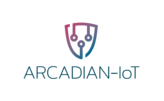In a previous post, we explained the horizontal planes of the ARCADIAN-IoT framework. Now we present the Arcadian IoT framework requirements for the vertical planes which formulate the reference architecture and components. This article focuses on the vertical planes technological components and how these integrate with the overall vision.
ARCADIAN-IoT is working towards a holistic security framework that implements vertical planes devoted to Identity, Trust, and Recovery management mechanisms and tools which in turn are integrated with and supported by the horizontal layers that provide privacy and security mechanisms and tools, as well as a common security layer providing encryption and blockchain capabilities to the whole framework. The main objectives of the vertical planes are thus to:
- Create a distributed identity solution based on the Self-Sovereign approach
- Create a high level of trustworthiness for IoT devices, services and personas communication
- Provide automated recovery mechanisms for data and credentials
The components within each of the vertical planes are shown in the following figure along with their applicability to the actors in each of the domain use cases. For example, one can see that the Decentralised Identifiers component in the Identity plane is applicable to support the identification of Persons, IoT Devices and Apps & Services.

Each of the domain use cases, as per the figure below, has now been fully analysed and the vertical plane components needed to meet the use cases and their requirements are clear. The next step is to detail further the architecture and identify the needed technology for each component and specify their low-level design to be able to then begin the implementation.
.

